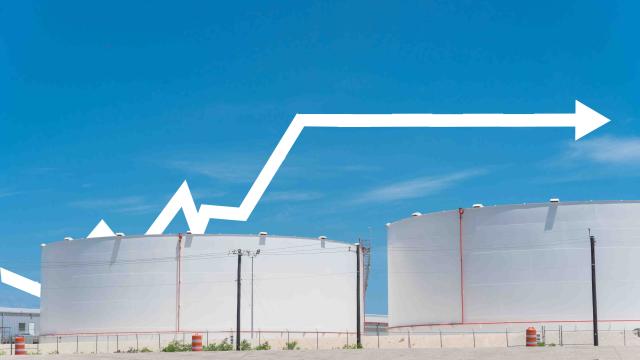
Oil storage tanks in Corpus Christi, Texas. (Source: Trong Nguyen/Shutterstock.com)
LONDON—U.S. petroleum inventories show signs of stabilizing as domestic crude production and imports slow while refinery processing gradually increases from last month’s crisis lows.
Excess inventories are clearing from the crude side first in response to output cuts, while a reduction in refined fuel stocks will take longer as consumption is slower to return.
Total inventories of crude and products, excluding the Strategic Petroleum Reserve, rose by another 5 MMbbl last week, taking the cumulative increase to 142 MMbbl since March 20.
Total inventories have climbed to a record 1.4 billion barrels, but the rate of increase has decelerated progressively since the second week of April.
Crude inventories actually fell by 5 MMbbl last week, the second weekly decline in a row, a marked turnaround from the previous rise of 78 MMbbl since March 20.
Crude in storage around the NYMEX WTI delivery point at Cushing, Okla., fell almost 6 MMbbl, also the second weekly decline, easing concerns about tank space running out.
Cushing tank farms are now 72% full, down from 83% at the start of the month, with capacity to store up to an extra 21 MMbbl if necessary.
Domestic crude production has fallen to around 11.5 MMbbl/d, from 13.1 MMbbl/d before the country went into lockdown, according to estimates by the Energy Information Administration.
Crude imports decelerated to just 5.2 MMbbl/d last week, the second slowest rate since 1992, accelerating the market rebalancing.
Fuel Demand
Despite progress cutting crude inventories, stocks of refined products continued to climb last week, as refinery restarts outpaced the resumption of fuel consumption for the time being.
Gasoline stocks climbed almost 3 MMbbl last week while distillates were up by almost 4 MMbbl.
Gasoline inventories show signs of peaking in recent weeks, but distillates are still rising and are now up by around 34 MMbbl since the lockdown started.
Refineries processed 12.9 MMbbl/d of crude last week, down from 15.8 MMbbl/d on the eve of the crisis, still more than the market can absorb for the time being.
As a result, refineries’ processing rates will have to remain restrained for several more weeks to allow excess fuel stocks to be digested.
The U.S. petroleum supply system has successfully adapted to the largest and most abrupt shock in its 160-year history.
It will take months for petroleum inventories to return to normal levels but the adjustment is now clearly underway.
Recommended Reading
Kissler: OPEC+ Likely to Buoy Crude Prices—At Least Somewhat
2024-03-18 - By keeping its voluntary production cuts, OPEC+ is sending a clear signal that oil prices need to be sustainable for both producers and consumers.
Buffett: ‘No Interest’ in Occidental Takeover, Praises 'Hallelujah!' Shale
2024-02-27 - Berkshire Hathaway’s Warren Buffett added that the U.S. electric power situation is “ominous.”
Canadian Natural Resources Boosting Production in Oil Sands
2024-03-04 - Canadian Natural Resources will increase its quarterly dividend following record production volumes in the quarter.
NGL Growth Leads Enterprise Product Partners to Strong Fourth Quarter
2024-02-02 - Enterprise Product Partners executives are still waiting to receive final federal approval to go ahead with the company’s Sea Port Terminal Project.
Enbridge Advances Expansion of Permian’s Gray Oak Pipeline
2024-02-13 - In its fourth-quarter earnings call, Enbridge also said the Mainline pipeline system tolling agreement is awaiting regulatory approval from a Canadian regulatory agency.





